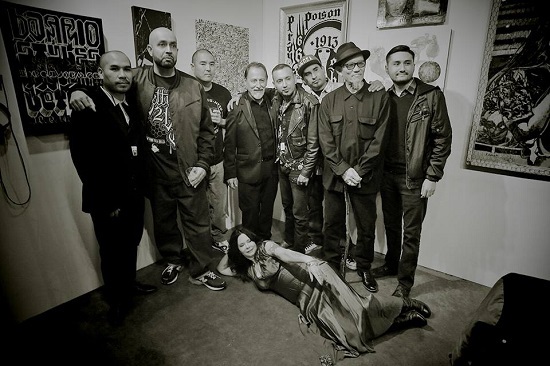Now in its 20th year, the Los Angeles Art Show concluded this past weekend. However, it has only been in the past few years that its international recognition has reached levels of significant importance in regards to diversity, while simultaneously recognizing the burgeoning local scene coming from the last stop on the Western frontier. Once again, Los Angeles has become the Wild West in regards to a new boom, which has tapped into its historical narrative of previous rushes like gold, health, sunshine, industry, manufacturing, film, oil, and others. Today we are experiencing a cultural revolution and although in prior rushes we had an influx of migrants that contributed to its development, this one is internal and champions the native as the major benefactor. No exhibition captured this zeitgeist better than Dark Progressivism: Metropolis Rising. Put together by Cindy Schwarzstein and Lisa Derrick of Cartwheel Art, an online magazine and far reaching media sponsor, the exhibition's monochromatic theme, (blacks, whites, greys) was a captivating experience that gave you a sense of exhilaration and familiarity. Its roots can be traced back to German Expressionism, film noir, Social Realism, and the Rupture Generation, and often at the booth people would recognize some of these connections, while also maintaining, "This is so L.A."
The Dark Progressivism: Metropolis Rising exhibition showed you a different Los Angeles though, the one that isn't associated with booster ideology like sunshine, orange groves, and Chamber of Commerce land speculation. The collection of artists represented were myth debunking artists that come from all over the Southland, one as far north as Jack Morris, currently housed at the Pelican Bay SHU program for almost thirty years. The diversity, background and location amongst the artists, such as Big Sleeps and Jose "Prime" Reza of Pico Union, Juan Carlos Munoz Hernandez, Daniel Gonzalez, and Alex "Defer" Kizu of Boyle Heights, Chaz Bojorquez of Highland Park, Gary Wong of South Central, Michael Ulrich of Glendale, Cryptik of Pasadena, Jason Hernandez of Bellflower, Jesse Hazelip of Ventura, Rafael Reyes of San Diego, Abel Alejandre of Long Beach, Roberto Gutierrez of Chinatown/Lincoln Heights, and Ed Gutter of Whittier was done purposely. The vast landscape itself represented the city-state perspective of the Los Angeles megalopolis and its tentacle-like reach that transcends county lines in general. And like all city-states of prior civilizations that achieved greatness, such as Athens, Tenochtitlan, and Edo, the art and literature of the period was hailed as a major indicator of their legacy.
The exhibition was also associated with the film, Dark Progressivism: On Rupture and Rebellion, which is a social science research film that uses contemporary Los Angeles art, including tattoo, fine art, calligraphy, murals, and graffiti as the subject matter, while playing close attention to the social conditions from which it was produced. The film is scheduled to be released in October and is still in production. In today's fast-paced urban environment, the complexity of modern technologies is as overwhelming as its ever been, but it is in the coping techniques that you find solace. In the 1920's, Louis Adamic, a Yugoslavian immigrant in Los Angeles wrote about laughing in the jungle, the concrete jungle, as a way to cope with anxiety, absurdity, isolation, or the quest for community in the modern-day Los Angeles metropolis. He viewed Los Angeles as a jungle, a place where things flourish and grow temporarily, but then fall to decay and chaos and must make room for something else rising from beneath... the underground. And that is Dark Progressivism, coming from beneath, and having the best seat in the economic union of the Pacific Rim...Los Angeles.
Photo credit, Lisa Derrick and Michael Ulrich 2015
